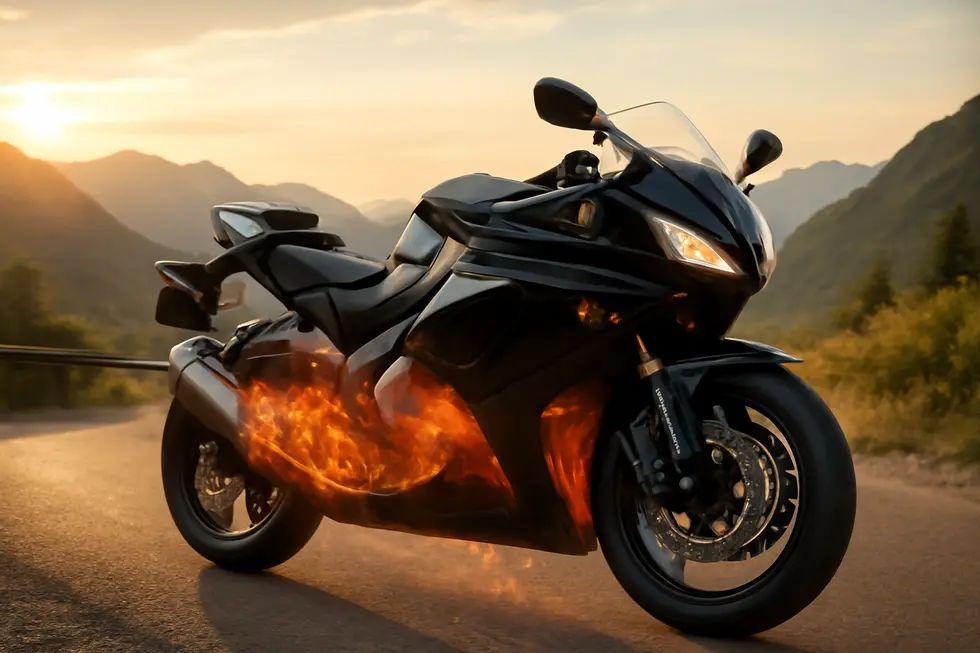Mastering How to Polish Motorcycle Fairings: A Business Owner’s Guide to Superior Finish and Protection
September 23, 2025 | by summitfairings
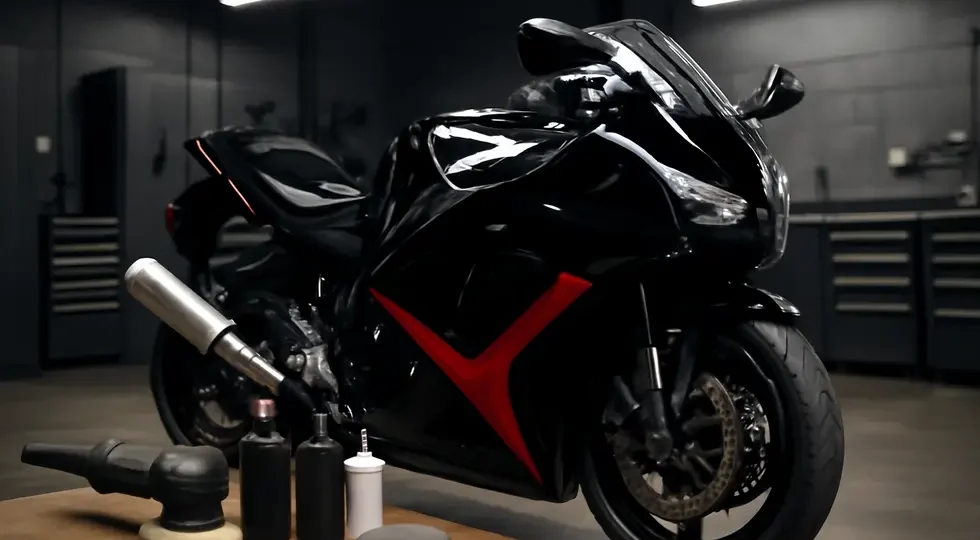
Introduction
Motorcycle fairings require precise care to maintain an appealing finish and lasting durability, especially for businesses in the automotive aftermarket, repair, or customization sectors. Achieving a flawless polish not only enhances aesthetic appeal but also extends the life of these critical components. This comprehensive guide breaks down essential steps—from effective cleaning and preparation to the use of a dual-action polisher, handling material differences, addressing scratches, applying protective coatings, and ongoing maintenance. Each chapter builds a practical framework designed to empower business owners with the know-how to deliver premium results on every fairing they service or sell.
Tables of Contents
Chapter 1: Cleaning and Preparation for How to Polish Motorcycle Fairings
- Essential Cleaning and Drying Strategies for Pristine Motorcycle Fairings
- Essential Decontamination and Surface Prep Techniques for Impeccable Motorcycle Fairings
- Thorough Inspection and Surface Refinement for Flawless Motorcycle Fairings
Chapter 2: Mastering the Dual-Action Polisher for Flawless Motorcycle Fairings
- Choosing and Using the Ideal Dual-Action Polisher and Pads for Motorcycle Fairing Perfection
- Essential Techniques and Safety Tips for Polishing Motorcycle Fairings with a Dual-Action Polisher
- Balancing Power and Precision: Safety and Advantages of Dual-Action Polishers for Motorcycle Fairings
Chapter 3: Handling Plastic vs Painted Surfaces in How to Polish Motorcycle Fairings
- Mastering Surface Preparation and Tailored Polishing Techniques for Plastic and Painted Fairings
- Selecting Appropriate Tools and Techniques for Polishing Plastic and Painted Motorcycle Fairings
- Tailored Protective Treatments and Lasting Care for Plastic and Painted Motorcycle Fairings
Chapter 4: Techniques for Scratch and Imperfection Removal in How to Polish Motorcycle Fairings
- Mastering Abrasive Polishing: Restoring Motorcycle Fairings from Scratches to Shine
- Mastering Wet Sanding: A Precise Approach to Repairing Deep Scratches on Motorcycle Fairings
- Mastering Buffing and Protective Coatings to Restore and Preserve Motorcycle Fairings
Chapter 5: Mastering Protective Coatings for Motorcycle Fairings: Essential Techniques
- Critical Surface Preparation Steps for Durable Protective Coatings on Motorcycle Fairings
- Expert Techniques for Polishing and Applying Protective Coatings to Motorcycle Fairings
- Maximizing Durability and Shine: Practical Benefits and Care for Protective Coatings on Motorcycle Fairings
Chapter 6: Maintenance and Longevity Tips for How to Polish Motorcycle Fairings
- Mastering Essential Techniques and Materials for Durable Motorcycle Fairings
- Essential Care and Protective Steps to Preserve Your Polished Motorcycle Fairings
- Elevating Fairing Care: Advanced Polishing Techniques and Lasting Protective Coatings
Chapter 1: Cleaning and Preparation for How to Polish Motorcycle Fairings
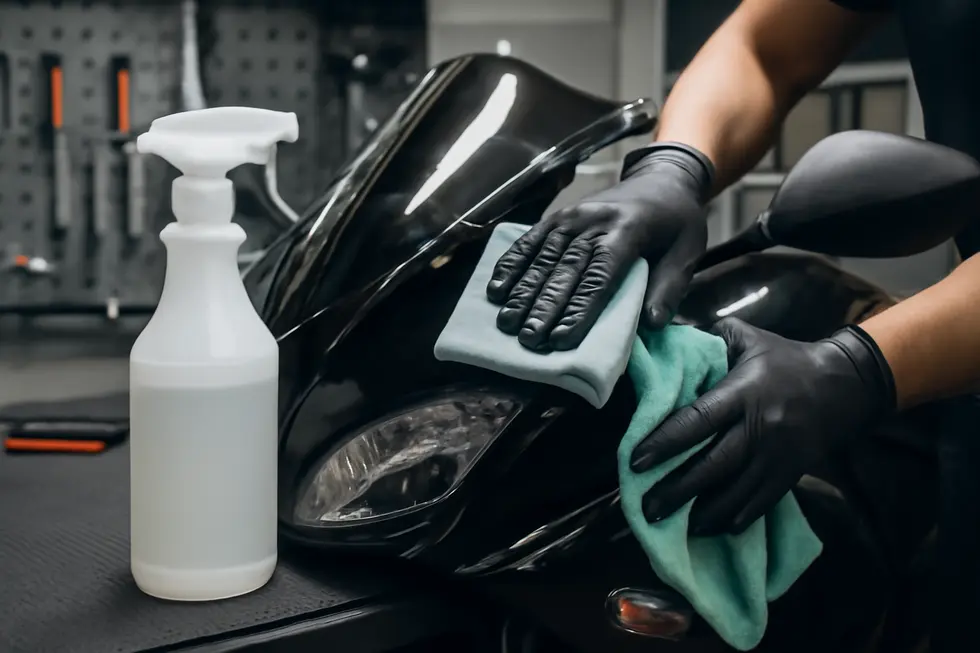
1. Essential Cleaning and Drying Strategies for Pristine Motorcycle Fairings
Thoroughly cleaning motorcycle fairings is the foundation for achieving a flawless polish. Begin by using gentle detergents or specialized snow foam to safely lift dirt and grime without damaging the paint or plastic surfaces. Harsh soaps should be avoided as they may dull finishes or cause micro-abrasions. After carefully washing, rinse the fairings thoroughly with clean water to remove all residues, ensuring no dirt remains trapped on the surface.
Equally important is the drying phase. Trapped moisture can lead to water spots or corrosion, undermining the polishing outcome. Using compressed air or a vehicle-specific blow dryer helps to dislodge water from tight seams and crevices, which towels alone cannot reach. Where these tools aren’t available, a leaf blower can serve as an effective substitute. Follow this by gently wiping the fairings with a clean, soft microfiber cloth to absorb any lingering dampness.
During cleaning and drying, avoid high-pressure water on sensitive areas like wiring connectors, gauges, and control assemblies, as this can cause damage. Once dry, inspect the fairings closely for stubborn impurities. Applying paint decontamination techniques, such as clay bar treatment, removes embedded contaminants invisible to the eye and creates a perfectly smooth surface, ready for polishing. This comprehensive cleaning and drying approach ensures your fairings are impeccably prepared, allowing polish compounds to deliver enhanced gloss and lasting protection.
For additional insight into maintaining your motorcycle’s appearance, explore expert advice on affordable motorcycle fairings and care.
2. Essential Decontamination and Surface Prep Techniques for Impeccable Motorcycle Fairings
Achieving a flawless polish on motorcycle fairings starts with thorough decontamination and surface preparation. After initial cleaning, it’s vital to eliminate bonded contaminants like iron particles, tar, and heavy grime that ordinary washing can’t remove. This is accomplished by applying specialized chemical decontaminants that dissolve these impurities, ensuring the surface is truly clean beneath the visible dirt. Following chemical treatment, a clay bar combined with lubricant lifts away microscopic debris, creating an exceptionally smooth and contamination-free finish.
Once decontamination is complete, careful inspection assesses the paint’s condition—determining its oxidation level and whether it has a clear coat or is single-stage. This evaluation guides the appropriate polishing strategy. Masking sensitive elements such as trim, glass edges, and emblems protects them from potential damage during polishing or coating application. Finally, proper drying using premium microfiber towels or gentle air blowing helps avoid introducing new scratches from dust or debris.
This meticulous prep routine prevents swirl marks and maximizes the polish’s effectiveness. It also creates the ideal surface for protective coatings, greatly enhancing gloss and durability over time. For a comprehensive understanding of motorcycle fairings and preparation insights, visit Explore the Best Motorcycle Fairings at Summit Fairings.
By integrating these essential steps, you lay a solid foundation for polishing that not only improves appearance but also extends the life of your motorcycle fairings.
3. Thorough Inspection and Surface Refinement for Flawless Motorcycle Fairings
Achieving a mirror-like finish on motorcycle fairings begins with meticulous inspection and surface refinement after cleaning and decontamination. This step ensures the surface is perfectly primed for polishing and protective coatings by identifying and addressing any lingering imperfections that could compromise the final result. After washing away grime and bonded contaminants with specialized cleaners and clay bars, the surface must be examined under strong, directional lighting to reveal swirl marks, scratches, paint oxidation, or embedded particles. These imperfections, if unchecked, can dull the fairings’ shine and reduce coating adhesion.
Once defects are spotted, corrective polishing with appropriate compounds smooths out minor flaws and removes oxidation, restoring uniform gloss and clarity. In this phase, selecting the right level of polish—whether single-stage for light correction or multi-stage for deeper damage—is critical to avoid overworking the paint or plastic surfaces. The final conditioning employs fine polishes or finishing compounds that erase any residual haze or micro-marring left by correction steps, producing a pristine surface with depth and brilliance. Some hard-to-reach areas may require careful hand-finishing to maintain consistency.
A second, close inspection confirms the surface cleanliness and evenness, ensuring no defects remain before applying long-lasting protective layers like ceramic coatings. These coatings bond optimally when the surface is perfectly prepared, offering enhanced gloss and durability. This detailed inspection and refinement phase is vital for a flawless shine and lasting protection, elevating the overall polish quality and preserving your motorcycle fairings’ beauty.
For an in-depth guide on removing paint oxidation and final surface conditioning, visit the detailed resource here: https://www.fresh-layer.com/blog/car-paint-oxidation-causes-prevention-and-restoration
Explore expert tips on motorcycle fairings maintenance and polishing at Summit Fairings blog.
Chapter 2: Mastering the Dual-Action Polisher for Flawless Motorcycle Fairings
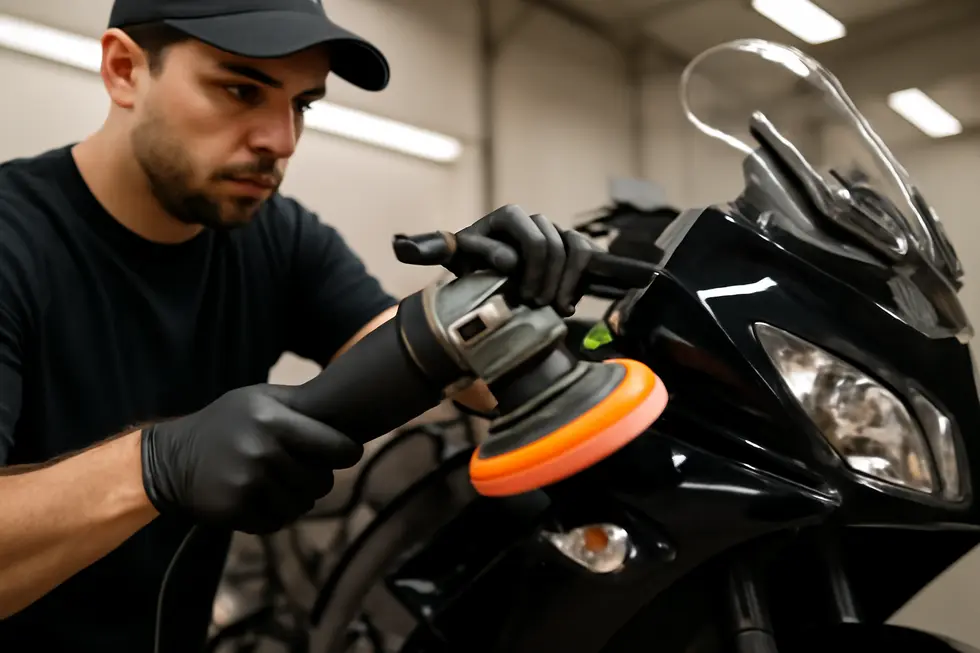
1. Choosing and Using the Ideal Dual-Action Polisher and Pads for Motorcycle Fairing Perfection
Selecting the right dual-action (DA) polisher and accessories is essential for polishing motorcycle fairings safely and efficiently. Unlike rotary polishers, a DA polisher’s dual-motion action reduces heat buildup and the risk of paint damage, which is crucial for delicate, curved surfaces like fairings. An ideal DA polisher should offer variable speed control, allowing adjustments from about 1000 to 2500 RPM. Lower speeds around 1000–1200 RPM work best for cutting and removing defects, while medium settings polish the surface smoothly. Higher speeds can be reserved for waxing but require care to prevent overheating.
Equally important is pad selection. Smaller foam pads between 3 and 5 inches are preferred due to the compact, contoured nature of motorcycle fairings. These provide better control, reach tight spots, and reduce the chance of uneven pressure. Using a progression of cutting, polishing, and finishing pads allows targeted correction at each stage, from defect removal to final gloss and protection. Applying only a few small drops of polish to the pad ensures even coverage and minimizes mess.
Working methodically in small, manageable sections with steady overlapping passes preserves an even finish and avoids burning the surface. Essential accessories include backing plates for secure pad attachment and microfiber towels to gently remove residues without scratching. With these thoughtful choices and a careful technique, the DA polisher becomes an effective tool to restore and enhance any motorcycle fairing’s appearance. For more detailed operational tips, visit Eastwood’s comprehensive polishing guide.
To explore specialized motorcycle fairing options compatible with polished finishes, consider exploring quality fairing selections at Summit Fairings’ blog.
2. Essential Techniques and Safety Tips for Polishing Motorcycle Fairings with a Dual-Action Polisher
Achieving a flawless polish on motorcycle fairings with a dual-action (DA) polisher requires precision and care. Start by selecting the correct pads and compounds; foam or microfiber pads evenly distribute polishing products and prevent uneven finishes. A cutting compound should be used first if deeper scratches are present, followed by finer polishes to refine the surface and bring out a high gloss. Applying polish with small, overlapping circular motions helps ensure consistent coverage without buildup, while keeping the pad slightly damp reduces heat and friction, protecting sensitive plastic surfaces from warping.
Operate the DA polisher at moderate speeds with gentle pressure—the randomized orbit action minimizes the risk of overheating or burning the plastic, a common hazard with rotary polishers. Testing polishing products on a small, discreet spot beforehand guards against damage to decals or delicate paintwork. After machine polishing, hand buffing with a clean microfiber cloth removes residue and boosts the shine further.
Finally, preserving the polished finish is critical; applying UV protectants or plastic sealants shields against sun damage and oxidation, extending the clarity and vibrancy of the fairings. Proper surface preparation, including thorough cleaning and decontamination, underpins all polishing efforts, ensuring the DA polisher’s effectiveness and preparing surfaces for subsequent protective layers.
For those newer to this technique, an in-depth visual guide on using a dual-action polisher for motorcycle plastics can be found in the informative “How Do I Polish Motorcycle Plastics?” video. Additionally, those interested in fairing options may explore comprehensive resources at Explore the Best Motorcycle Fairings at Summit Fairings to complement their polishing journey.
3. Balancing Power and Precision: Safety and Advantages of Dual-Action Polishers for Motorcycle Fairings
Using a dual-action (DA) polisher transforms the process of restoring motorcycle fairings by combining efficiency with protective care. Unlike rotary polishers, the DA polisher’s oscillating and spinning motion significantly lowers the risk of overheating or burning paint, making it a safer choice especially for fragile or painted surfaces. This dual motion not only reduces swirl marks but also minimizes the chance of excessive abrasion, which is crucial when working on delicate plastics and painted finishes that require careful handling.
The versatility of a dual-action polisher is another compelling advantage. It adapts well to different polishing needs, from light gloss enhancement to moderate paint correction. This flexibility means it suits various fairing conditions and materials without requiring multiple machines. Its ergonomic design and manageable weight further help reduce user fatigue, allowing for extended polishing sessions with greater control and precision.
To maximize safety and results, selecting the appropriate polishing pads and compounds is essential. Using cutting compounds carefully addresses scratches, while finishing polishes refine the surface for a high-gloss finish. Controlled speed and pressure prevent heat buildup and surface damage, particularly important for plastic fairings that respond poorly to excessive friction. Always prepare and clean the fairings thoroughly before polishing to avoid embedding debris that could scratch the surface.
Overall, the dual-action polisher offers a balanced approach—powerful enough for effective polishing yet gentle enough to safeguard delicate motorcycle fairings. For riders and enthusiasts aiming for a professional finish while preserving their bike’s appearance, mastering this tool is invaluable. For more insights on polishing tools and techniques, see explore the best motorcycle fairings at Summit Fairings.
Chapter 3: Handling Plastic vs Painted Surfaces in How to Polish Motorcycle Fairings
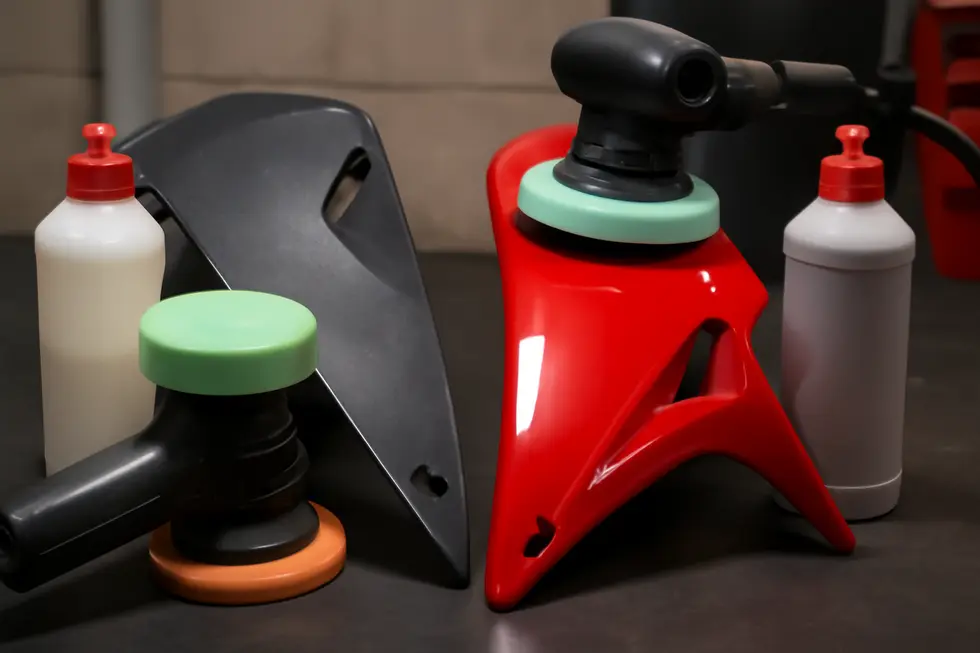
1. Mastering Surface Preparation and Tailored Polishing Techniques for Plastic and Painted Fairings
Polishing motorcycle fairings demands distinct preparation and techniques that respect the unique properties of plastic and painted surfaces. Plastic fairings require a gentle touch with moisture-controlled pads and low-speed tools to avoid heat damage or warping. Using a cutting compound addresses deeper scratches, followed by finer polishes to enhance shine. It’s vital to keep the polishing pad slightly damp and work in small, overlapping motions for even coverage. After polishing, applying a UV protectant preserves the plastic against oxidation and sun damage, which plastic parts are especially vulnerable to due to their lack of clear coats. Testing any product on a concealed spot safeguards against adverse reactions, while avoiding decals prevents lifting issues.
Conversely, painted fairings call for thorough decontamination to remove microscopic dirt and contaminants before polishing. Single-stage polishes or compounds help refine imperfections, but aggressiveness must be controlled to protect the delicate clear coat layer. Specialty paints, such as denim or metallic finishes, often benefit from very fine wet sanding before polishing to ease out fine scratches. Following polishing, ceramic coatings or paint sealants create a hydrophobic barrier that boosts gloss and long-term protection from environmental hazards. It’s crucial to recognize the limits of polishing; clear coat failure is irreversible through polishing and requires repainting.
Ultimately, tailoring polishing methods to material sensitivity ensures the best restoration results. Plastic surfaces thrive with moisture-managed, gentle polishing and UV protection, while painted surfaces depend on careful decontamination, controlled polishing, and durable protective coatings. For more insights, explore detailed techniques on precise plastic polishing at ride or die tutorials.
2. Selecting Appropriate Tools and Techniques for Polishing Plastic and Painted Motorcycle Fairings
Polishing motorcycle fairings demands tailored approaches depending on whether the surface is plastic or painted. Plastic fairings require gentler handling to avoid heat buildup and warping. Use soft foam or microfiber pads with mild abrasives, applying polish in careful, overlapping circular motions. For deeper imperfections, start with a cutting compound formulated for plastics, then refine the surface with a finer polish. It’s important to avoid high-speed buffers on plastics; instead, low-speed orbital tools or hand application is preferred. After polishing, applying a plastic protectant or UV sealant helps prevent fading and oxidation.
Painted fairings, on the other hand, often benefit from a more aggressive multi-stage correction process. Professionals typically use machine polishers like dual-action buffers combined with various pads and abrasive compounds. This involves compounding to address deeper scratches and swirl marks, followed by polishing to restore gloss and smoothness. The key is to monitor paint thickness carefully to avoid damage to the clear coat. Post-polishing treatments such as paint sealants, waxes, or ceramic coatings provide enhanced protection and longevity.
Both plastic and painted surfaces can gain from ceramic coatings after polishing. These coatings improve UV resistance, boost durability, and make future cleaning easier. By selecting the right tools and adapting techniques to the material, you ensure effective restoration without compromising the integrity of the fairings. For more on choosing fairings suited for your motorcycle, explore this comprehensive guide on affordable motorcycle fairings.
Reference: Polishing guidelines adapted from industry standards and advanced techniques found in professional auto detailing resources.
3. Tailored Protective Treatments and Lasting Care for Plastic and Painted Motorcycle Fairings
Effective long-term care of motorcycle fairings requires recognizing the distinct needs of plastic versus painted surfaces. Painted fairings benefit from multi-stage machine polishing to remove imperfections like swirls and oxidation. Once polished, applying durable protective coatings—such as ceramic coatings or waxes—rests gloss and shields the paint from UV damage, contaminants, and minor abrasions. These coatings bond deeply after a final prep step, simplifying future maintenance and preserving vibrancy for years.
Plastic fairings, lacking a clear coat, tend to fade and chalk under UV exposure. Instead of abrasive polishing, gentle restoration with plastic-specific conditioners revitalizes color and texture. Following restoration, regular application of UV-protectant sprays designed for automotive plastics is critical to prevent premature fading and oxidation. Some advanced plastic ceramic coatings offer enhanced protection and gloss extension for up to several years, though maintenance must be more frequent than for painted surfaces.
The key to preserving both surfaces lies in targeted treatments: painted fairings rely on durable, semi-permanent coatings that reduce maintenance frequency, while plastic parts demand ongoing conditioning and UV defense to maintain their appearance. Regular cleaning and timely reapplication of these protective layers ensure the fairings continue to look their best and resist environmental damage.
For additional insights on selecting and caring for quality motorcycle fairings, visit Explore the Best Motorcycle Fairings at Summit Fairings.
Chapter 4: Techniques for Scratch and Imperfection Removal in How to Polish Motorcycle Fairings
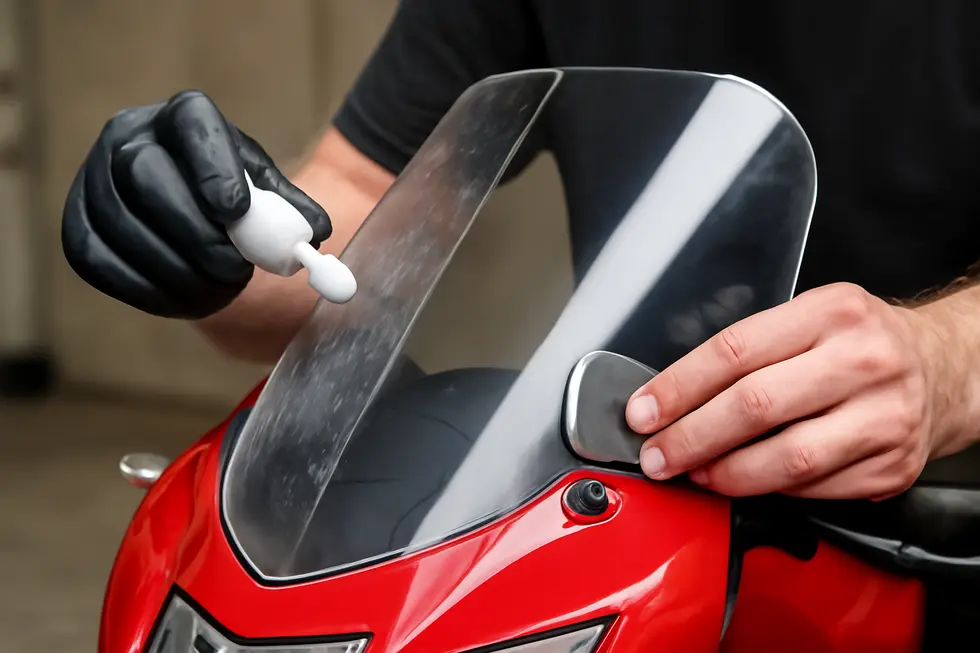
1. Mastering Abrasive Polishing: Restoring Motorcycle Fairings from Scratches to Shine
Effectively removing scratches and imperfections from motorcycle fairings demands a careful and controlled abrasive polishing process that refines the surface without compromising its integrity. This method begins with wet sanding, using a progression of fine-grit sandpapers starting around 400 grit and advancing up to 2000 grit. Water is essential during sanding to minimize heat and friction, which can damage delicate fairing materials. This gradual sanding process smooths out deeper scratches and levels imperfections, steadily refining the paint, clear coat, or plastic surface for an even texture.
Following sanding, polishing compounds are introduced to eliminate the fine micro-scratches left behind. These compounds—applied with appropriate pads or wheels—enhance gloss and clarity, restoring a smooth, reflective finish. The final step involves buffing with a mechanical wheel or buffer, producing a uniform, mirror-like shine that highlights the fairing’s curves and complex shapes.
Gentle, even pressure during all abrasive steps is critical to avoid removing too much material, especially on painted plastic fairings where clear coat preservation is paramount. Aluminum or metal parts undergo the same grit progression but employ polishing compounds designed for metals to achieve a brilliant finish. Before starting, deep cleaning is vital to ensure no dirt particles embed during sanding, reducing the risk of further surface damage.
This carefully layered approach to abrasive polishing transforms scratched, hazy motorcycle fairings into smooth, glossy components ready for subsequent protective treatments. For a deeper dive into polishing techniques tailored for motorcycle fairings, explore resources like the detailed tutorials found on Discover Affordable Motorcycle Fairings at Summit Fairings.
For further visual guidance and practical demonstration, detailed video tutorials showcasing wet sanding through buffing steps are invaluable in mastering these techniques.[6]
2. Mastering Wet Sanding: A Precise Approach to Repairing Deep Scratches on Motorcycle Fairings
Wet sanding stands out as a critical technique for repairing deep scratches on motorcycle fairings without compromising the surrounding finish. It involves carefully using very fine grit sandpaper, usually starting between 1000 and 1500 grit, soaked in water to lubricate and prevent heat buildup. This lubrication protects the fairing’s paint or plastic from damage while enabling a gentle leveling of the scratch edges.
The sandpaper is wrapped around a sanding block to maintain even pressure and prevent uneven surfaces or ripples. Maintaining constant moisture on both the sandpaper and the fairing surface is essential throughout the process. Sand with light, consistent strokes at a steady angle, ensuring you feather the scratch until its edges blend smoothly with the surrounding area.
Progressive grit refinement—from 1000 to 2000, and optionally up to 3000 grit—helps to gradually smooth the surface and restore a uniform finish. After sanding, a machine polisher with a soft foam pad is used at moderate speeds (about 1000–1500 RPM) along with an appropriate polish compound. This step revives gloss while blending the repair seamlessly into the fairing.
Finishing with a wax or ceramic coating seals the surface, protecting the repair and enhancing shine. This careful balance of sanding and polishing achieves effective deep scratch removal, preserving the integrity of paint or plastic finishes. For visual guidance on this precise technique, high-quality tutorials demonstrate wrapping sandpaper on blocks, maintaining lubrication, and polishing afterward (see this example: https://www.youtube.com/watch?v=6dqCRqSkw).
For further insights on maintaining and restoring your fairings, explore expert advice on Summit Fairings’ blog.
3. Mastering Buffing and Protective Coatings to Restore and Preserve Motorcycle Fairings
Buffing is a vital step in erasing scratches and refining the surface of motorcycle fairings. Using a foam or microfiber pad on a low-speed orbital buffer ensures even polish distribution without overheating or damaging the plastic or paint. Starting with a corrective compound tackles deeper scratches, while following with a finer polish refines the finish and brings out a brilliant shine. Keeping the pad slightly damp helps reduce friction, allowing the polish to work more effectively while preventing haze or swirl marks. Once polishing is complete, gently buffing by hand with a clean microfiber cloth removes residue and highlights the gloss, unveiling a smooth, rejuvenated surface.
After restoring the fairings through buffing, applying a protective coating is essential to preserve this renewed appearance. Plastic protectants shield against ultraviolet rays and oxidation, guarding the clarity and vibrancy of unpainted parts. For painted surfaces, professional-grade ceramic coatings create a durable, semi-permanent barrier that resists environmental damage, dirt buildup, and minor abrasions. This protective layer not only extends the lifespan of the motorcycle’s finish but also simplifies future cleaning and maintenance.
Together, these techniques form a comprehensive approach: buffing meticulously removes imperfections and restores shine, while protective coatings lock in the results, ensuring long-lasting durability and visual appeal. For hands-on demonstrations and practical advice on polishing plastics, the YouTube video “How Do I Polish Motorcycle Plastics?” offers valuable guidance.
Explore more about maintaining and enhancing your motorcycle’s look on Summit Fairings’ blog.
Chapter 5: Mastering Protective Coatings for Motorcycle Fairings: Essential Techniques
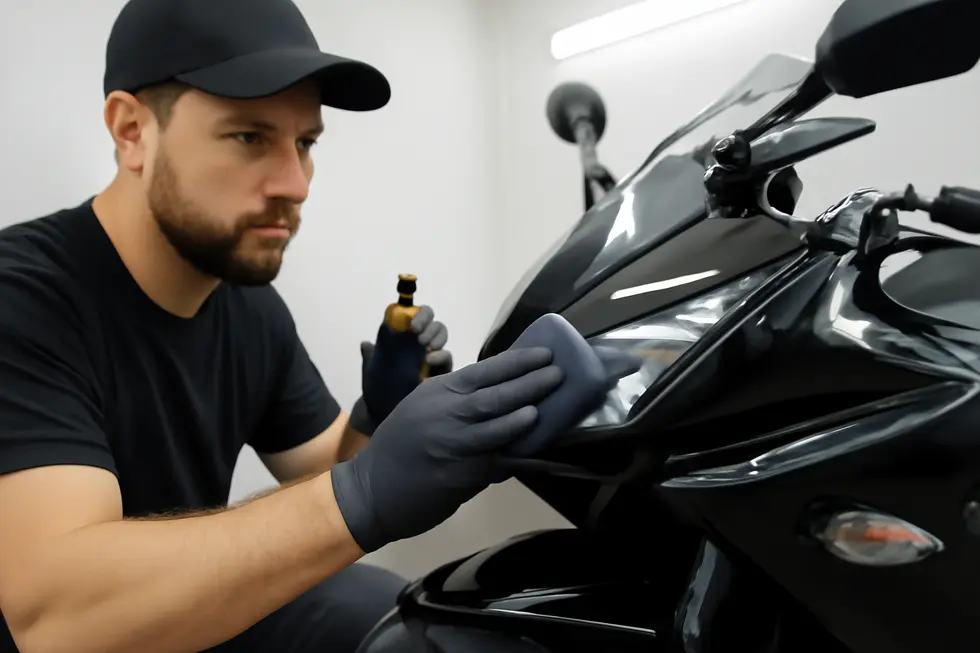
1. Critical Surface Preparation Steps for Durable Protective Coatings on Motorcycle Fairings
Achieving a flawless, long-lasting protective coating on motorcycle fairings begins with meticulous surface preparation. The process starts by thoroughly cleaning the fairings to eliminate dirt, grease, wax, and any oils that can compromise coating adhesion. Using a degreaser or isopropyl alcohol ensures the surface is perfectly clean and ready for the next steps. Once cleaned, decontamination is crucial; employing clay bars or similar tools removes stubborn embedded contaminants such as tar, sap, and industrial fallout, smoothing the surface and revealing a pristine base.
In cases where fairings show oxidation or surface damage, a light sanding with fine grit pads—typically between 600 and 800 grit—helps level imperfections and creates an ideal texture for coatings to bond. Polishing follows, often in multiple stages, where cutting compounds gently remove scratches and oxidation, and finer polishes restore depth and clarity. This step refines the fairing’s finish, enhancing gloss and promoting coating durability.
After polishing, it’s essential to remove all residues by wiping down with isopropyl alcohol or a suitable solvent. This final cleansing step prevents any leftover oils from interfering with the coating’s effectiveness. Preparing the workspace by masking non-coated areas and maintaining a clean, dust-free environment with controlled temperature and humidity further safeguards coating quality. Applying protective layers like waxes, sealants, or ceramic coatings on this carefully prepared surface results in enhanced durability, UV resistance, and easier maintenance.
For a detailed, professional walkthrough of these preparation and application techniques, see the comprehensive guide on the Owner’s Pride website.
2. Expert Techniques for Polishing and Applying Protective Coatings to Motorcycle Fairings
Achieving a flawless finish on motorcycle fairings involves a meticulous polishing process followed by careful application of protective coatings. Polishing begins by choosing a foam or microfiber applicator pad to evenly spread polish using small, overlapping circular motions. This method avoids buildup and ensures a uniform surface. For fairings with deeper scratches, start with a cutting compound to remove imperfections, then transition to a finer polish to smooth and enhance gloss. Keeping the polishing pad slightly damp reduces friction, helping prevent damage such as melting or warping—especially important with plastic fairings.
After polishing, buff the surface gently with a clean microfiber cloth to eliminate residues and elevate the shine. The next step involves applying protective measures that guard against UV rays, oxidation, and environmental harm. Plastic protectants and sealants shield the surface, but for the most durable and long-lasting protection, ceramic coatings provide a molecular bond to paint or plastic, dramatically increasing hardness and hydrophobic properties. This treatment makes future maintenance easier by repelling dirt and water, while maintaining brilliance over time.
Professional-grade coatings require immaculately clean surfaces and uniform application, often best handled by certified technicians to ensure coverage and longevity. Testing products on inconspicuous areas safeguards against unexpected reactions. Avoiding high-speed polishing during preparation preserves the integrity of plastic fairings. This comprehensive approach not only restores the fairings’ aesthetic but ensures their protection and resilience against the elements.
For further detailed, visual guidance on polishing motorcycle plastics and applying protective coatings, consider exploring the video tutorial “How Do I Polish Motorcycle Plastics?” available online. Additionally, for a wide range of quality motorcycle fairings, explore the best motorcycle fairings at Summit Fairings.
3. Maximizing Durability and Shine: Practical Benefits and Care for Protective Coatings on Motorcycle Fairings
Protective coatings offer transformative advantages when applied to motorcycle fairings, increasing both longevity and aesthetic appeal. These coatings form a durable, semi-permanent shield that guards fairings against everyday hazards like scratches, chemical exposure, and UV rays, which commonly degrade plastic and painted surfaces. By chemically bonding to the substrate, coatings outperform traditional waxes and sealants, providing stronger resistance to environmental wear and preserving the original gloss and color vibrancy over time.
The hydrophobic nature of many coatings greatly simplifies maintenance by repelling water, dirt, and grime, reducing the frequency of washes needed to keep fairings looking pristine. However, to fully benefit from these coatings, meticulous surface preparation is essential. Thorough cleaning and polishing eliminate oxidation, scratches, and contaminants, ensuring the coating adheres effectively and the final finish is flawless.
Applying these coatings demands careful technique to achieve even coverage and avoid imperfections, often benefiting from professional expertise. Once applied, regular gentle washing with mild cleansers helps preserve the coating’s protective and water-repellent properties without risking degradation. Harsh chemicals and aggressive solvents should be avoided to maintain coating integrity.
With proper preparation, application, and maintenance, protective coatings significantly ease upkeep while enhancing the fairings’ resistance to damage and environmental effects. For those interested in deeper insights and expert tips on coating benefits, the RI Motorsports and Detail guide is a valuable resource. Exploring quality motorcycle fairings and protective solutions can be further supported through specialized suppliers such as Summit Fairings.
Chapter 6: Maintenance and Longevity Tips for How to Polish Motorcycle Fairings
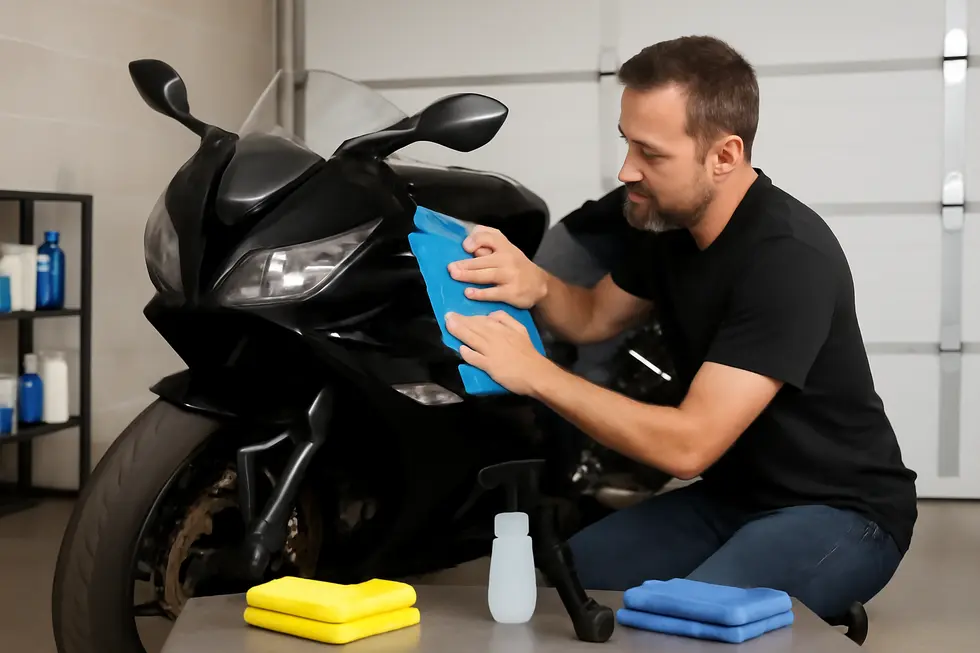
1. Mastering Essential Techniques and Materials for Durable Motorcycle Fairings
Achieving long-lasting shine and protection on motorcycle fairings hinges on using the correct techniques and materials throughout the polishing process. The foundation of successful maintenance begins with a thorough cleaning using mild soaps and soft cloths to remove dirt and grease without harming the surface. After cleaning, closely assess the fairings for signs of oxidation, fading, or scratches. Addressing these imperfections properly often involves wet sanding with fine-grit sandpaper, keeping the surface lubricated to prevent new scratches and exposing fresh plastic beneath stubborn oxidation.
When polishing, it is vital to choose compounds specifically formulated for motorcycle plastics. Applying these compounds gently and avoiding high-speed polishers prevents melting or warping the delicate surfaces. Once polish restores clarity and gloss, applying a protective layer is crucial. Options range from traditional waxes that enhance gloss and repel contaminants to advanced ceramic coatings, which chemically bond with the fairings. These coatings provide robust, long-term defense against UV rays, dirt, and grime, simplifying upkeep and preserving the finish over years.
To further extend fairings’ lifespan, minimize prolonged sun exposure by parking in shaded locations or indoors, and use UV-protective covers when the bike is idle. Regular cleaning with mild solutions and prompt reapplication of protective products maintains the polished surface’s brilliance and durability. Incorporating these combined practices not only revitalizes your motorcycle fairings but also secures their appearance and performance for the road ahead.
For a detailed walkthrough on sanding and polishing plastics effectively, the YouTube tutorial “How Do I Polish Motorcycle Plastics?” offers practical demonstrations to complement these guidelines. For expanding your knowledge on high-quality fairings and maintenance, explore more insights at Summit Fairings blog.
2. Essential Care and Protective Steps to Preserve Your Polished Motorcycle Fairings
Achieving and maintaining a brilliant finish on motorcycle fairings goes beyond just polishing. After the polishing stage, carefully applying protective coatings is crucial to guard against UV damage and environmental wear. Using a plastic-specific protectant or sealant shields the surface from oxidation and fading caused by sunlight exposure. This protection helps preserve the depth and gloss of both painted and plastic fairings over time.
Regular, gentle cleaning supports this protection, keeping dirt and grime from degrading the finish. Employ mild soap solutions and soft cloths to wash fairings, avoiding harsh chemicals or abrasive materials that can dull or scratch the surface. When your bike is parked, minimizing exposure to direct sunlight by parking in shade or garages significantly slows down UV damage. If outdoor parking is unavoidable, a quality motorcycle cover with UV resistance provides an additional layer of defense.
Consistent upkeep using motorcycle-safe waxes adds a sacrificial barrier that enhances gloss while repelling contaminants. For riders seeking long-term durability and ease of maintenance, professional ceramic coatings offer advanced protection by forming a hydrophobic layer that resists dirt and water. These coatings bond at a molecular level to the paint or plastic, sustaining the polished shine for years.
When polishing, maintain gentle pressure and keep applicators slightly damp to avoid heat buildup and plastic warping. Testing any product on a small, hidden area helps ensure compatibility and prevents damage. Avoid polishing over decals or stickers to prevent lifting.
Together, these care and protection techniques combine to extend the life, shine, and resilience of your motorcycle fairings. For a comprehensive range of options, explore trusted sources for expert guidance and products like those offered in the detailed Summit Fairings blog.
For a practical demonstration on polishing and applying protectants, see the instructional video by Ride or Die.
3. Elevating Fairing Care: Advanced Polishing Techniques and Lasting Protective Coatings
Achieving and maintaining a showroom shine on motorcycle fairings requires more than just initial polishing—it calls for advanced techniques paired with durable protective solutions. After a thorough cleaning and careful surface preparation, polishing involves using foam or microfiber applicators with overlapping circular motions to evenly refine the surface. For scratches or imperfections, starting with a cutting compound before moving to finer polishes restores clarity and gloss while reducing friction by keeping pads slightly damp preserves the plastic’s integrity. Avoid applying polish over decals to prevent damage.
The next step for long-term preservation is the application of specialized plastic protectants or sealants, which guard against UV damage and oxidation to maintain the fresh polish longer. For superior durability, professional-grade ceramic coatings offer a molecular bond to the surface, dramatically enhancing hardness, gloss, and water resistance. These semi-permanent barriers simplify cleaning and uphold protection against environmental factors for years, often backed by multi-year warranties.
Industry experts use variable-speed dual-action polishers and an array of pads tailored to defect severity, ensuring optimal surface correction and finish. Employing professional-grade products and sealants not only prolongs the polished appearance but also reduces maintenance frequency. Routine cleaning paired with UV protectants is key to preventing premature fading, while entrusting ceramic coating application to professionals guarantees lasting results.
For comprehensive fairing options and complementary maintenance insights, explore Summit Fairings’ selection of motorcycle fairings.
For a detailed polishing demonstration, see this practical guide: How Do I Polish Motorcycle Plastics? – Ride or Die.
Final thoughts
For business owners in the motorcycle industry, mastering the art of polishing fairings is a strategic advantage that generates customer satisfaction and showcases professionalism. By rigorously cleaning and preparing surfaces, leveraging dual-action polishers suited to the material at hand, addressing all imperfections with precision, and protecting finishes through modern coatings, it is possible to deliver exceptional quality that stands out. Consistent maintenance further maximizes the longevity of these efforts. Incorporating this systematic approach cultivates trust and positions businesses as leaders in delivering top-tier motorcycle care and customization.
Ready to elevate your ride? Summit Fairings delivers premium, custom-fit fairings that blend style and durability. Whether you’re chasing speed or turning heads, we’ve got your bike covered. Don’t wait—transform your machine today. Click, customize, and ride with confidence. Your perfect fairing is just a few clicks away. Act now!
About us
undefined
RELATED POSTS
View all



